Looking for the best Thai food? Start at this temple's parking lot
Every weekend, plumes of smoke billow up from the parking lot of the Wat Thai in Sun Valley. The aromas of meat grilling on an open flame, banana fritters frying in vats of roiling oil and pungent lemongrass and fish sauce drift down the block, well past the perimeter of the gleaming 50-year-old Thai Buddhist temple, the oldest in the country.
This is where roughly 17 vendors gather every weekend to sell papaya salad prepared in large stone mortars, sliced ripe mango with sticky rice, grilled skewers of marinated pork, curls of deep-fried chicken skins, overflowing styrofoam boxes of crab fried rice, grilled sour pork sausages with slivers of raw garlic, and rice flour pizzelles full of “Thai gelato.” There are even the obligatory farmers market bags of kettle corn.
Visitors roam the outdoor food court with swiveling heads, clutching clear baggies full of orange and purple plastic tokens. You exchange cash for the $1 and $2 tokens, then present them to vendors like Monopoly money.
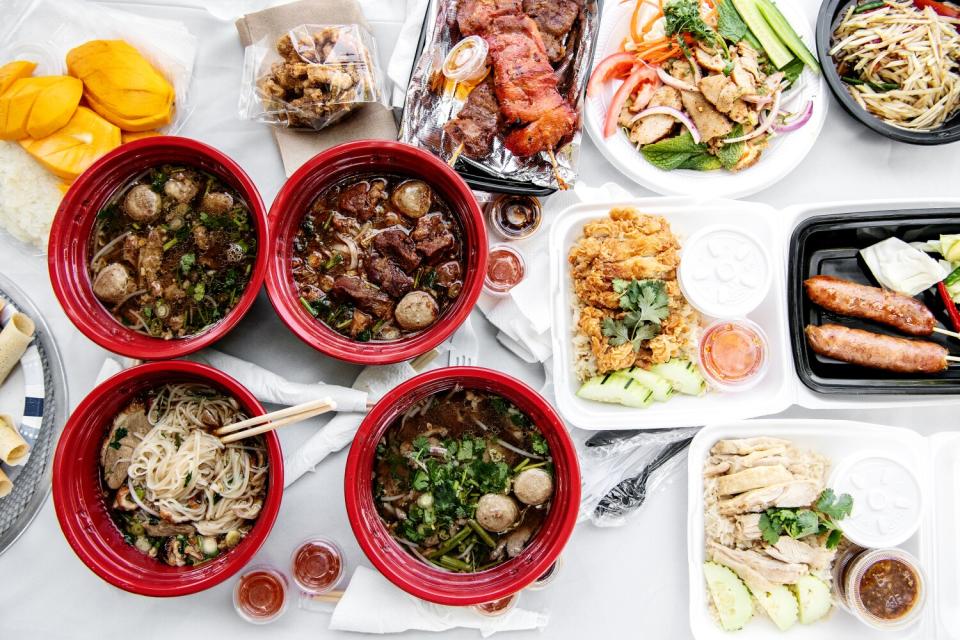
On average, the market sees around 1,500 to 2,000 visitors a weekend. And on a busy Sunday, this small parking lot can feel like the nucleus of the Thai community of Los Angeles.
“It’s exactly the same as the markets you can find all throughout Thailand,” said Tor Saralamba, consul general of Thailand in Los Angeles, and a frequent visitor to the food court. “Food is culture; it represents who we are, and the market is like an orientation to our food.”
It started in the 1980s with one or two families selling food to feed the parents and grandparents of the children attending classes at the temple, according to Ton Pattana, who took over the food court operations in 2021. It was originally located beneath the building, where the classes were held, but quickly outgrew the space and moved.
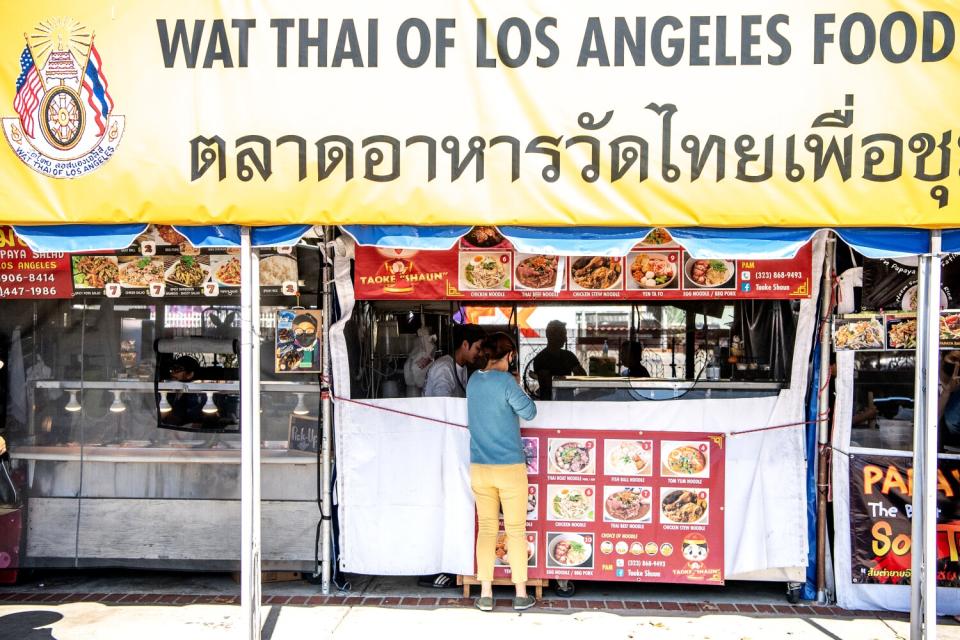
After a two-year hiatus during the pandemic, the weekend food court returned in November with a new lineup of rotating vendors. But not just anyone can be a vendor. First, you need to win a good old-fashioned food throw-down.
“I want it to be fair, so we have a competition,” said Pattana, “With COVID, we had to reduce the number of vendors from more than 25 to 17.”
Pattana hosts a competition in which potential vendors present food to five anonymous judges who own Thai restaurants in Los Angeles. The goal is to have a broad representation of dishes at the market. If you want to fry bananas, you’ll have to go head to head with another vendor to win a spot.
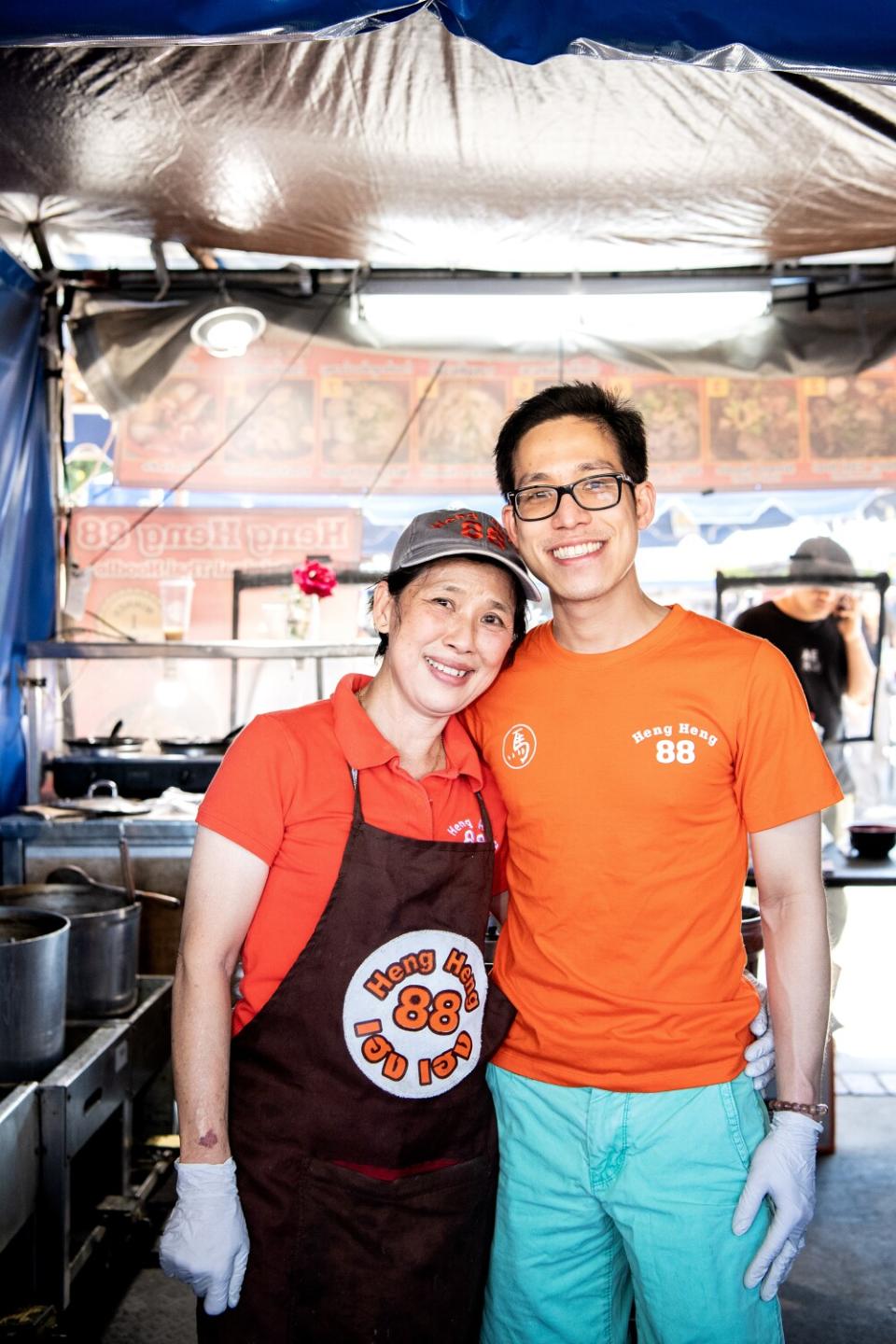
Heng Vongasavarit and his mother, Suchada, have been selling bowls of noodle soup at the temple since 2003. They proudly display their first-place competition vendor banner under their picture menu of duck noodle soup, boat noodles and pho.
The duck noodle soup is a favorite, with a dense, meaty, muddy broth and a mess of tangled rice noodles. It’s garnished with slices of tender duck, crispy bits of skin and plenty of cilantro.
The Vongasavarits ran restaurants in Thailand but said they won’t be moving on from the temple food court anytime soon.
“Owning restaurants is a headache,” Heng said. “Here, the initial investment isn’t much, the overhead cost is affordable, and it’s not nearly as expensive as having a bricks-and-mortar.”
The temple takes 20% of every dollar exchanged for tokens at the market. That money goes toward temple expenses as well as renewing the permit for the food court every three months and providing the vendors with tents, tables and chairs.
“In the last two months we spent $120,000 repainting and almost $80,000 on a new carpet for the temple," Pattana said. “We spent $100,000 to remodel the market and get it up and running again.”
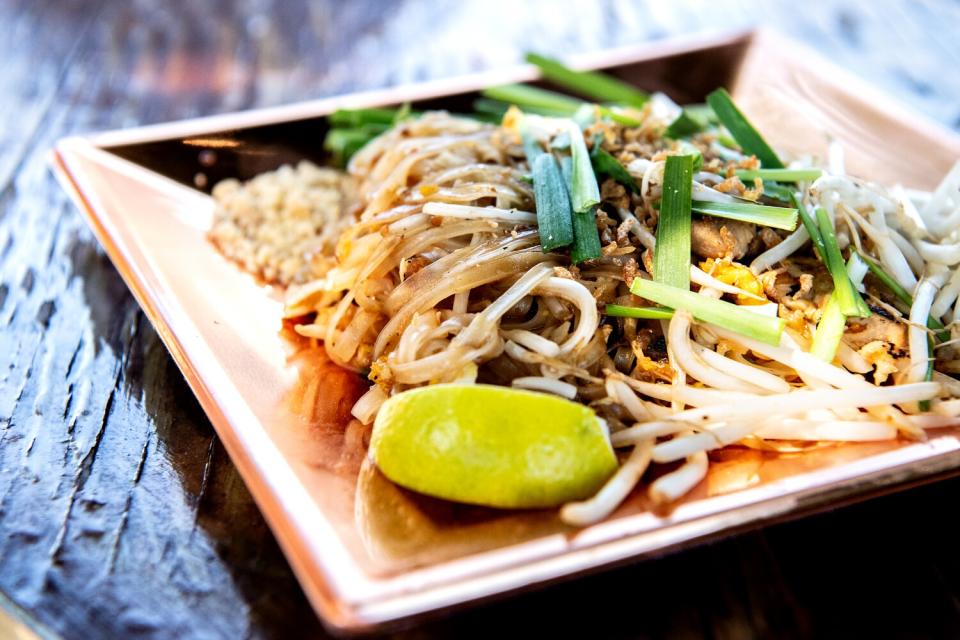
Art Sungkamee runs the Pad Thai Boran stall a few tents north of Heng Heng 88. The picture menu out front features enlarged photos of crab fried rice, crab rubbed with green curry paste and Sungkamee’s specialty, pad Thai.
On a recent Sunday, in the makeshift kitchen behind his tent, Sungkamee expertly handled a wok engulfed in flames, tossing thin, flat rice noodles in a sweet tamarind sauce until the noodles were slick and shining. An egg that scrambled in seconds was thrown in along with bean sprouts and plenty of green onion. If you want an exemplary version of pad Thai, this is where to find it.
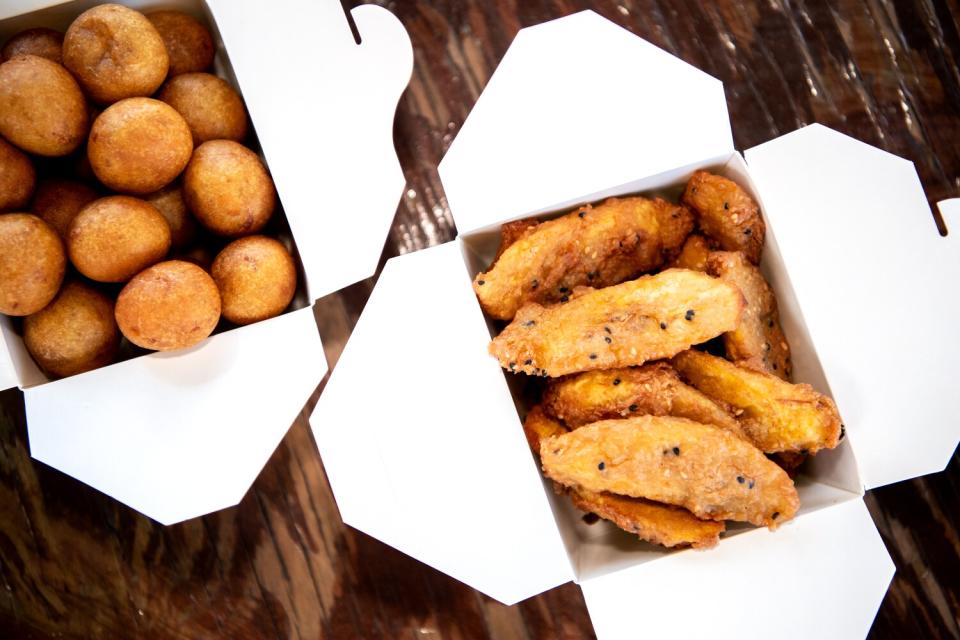
There are plenty of options for dessert, with crispy fried bananas and sweet potato balls that look like perfectly round doughnut holes but taste like mochi, as well as platters of khanom khrok along with stuffed, crisp crepes that look like tiny cigars. But for “Thai gelato,” visit software engineer Darwin Wai at the purple and yellow Moom Maam tent near the northwest corner of the food court.
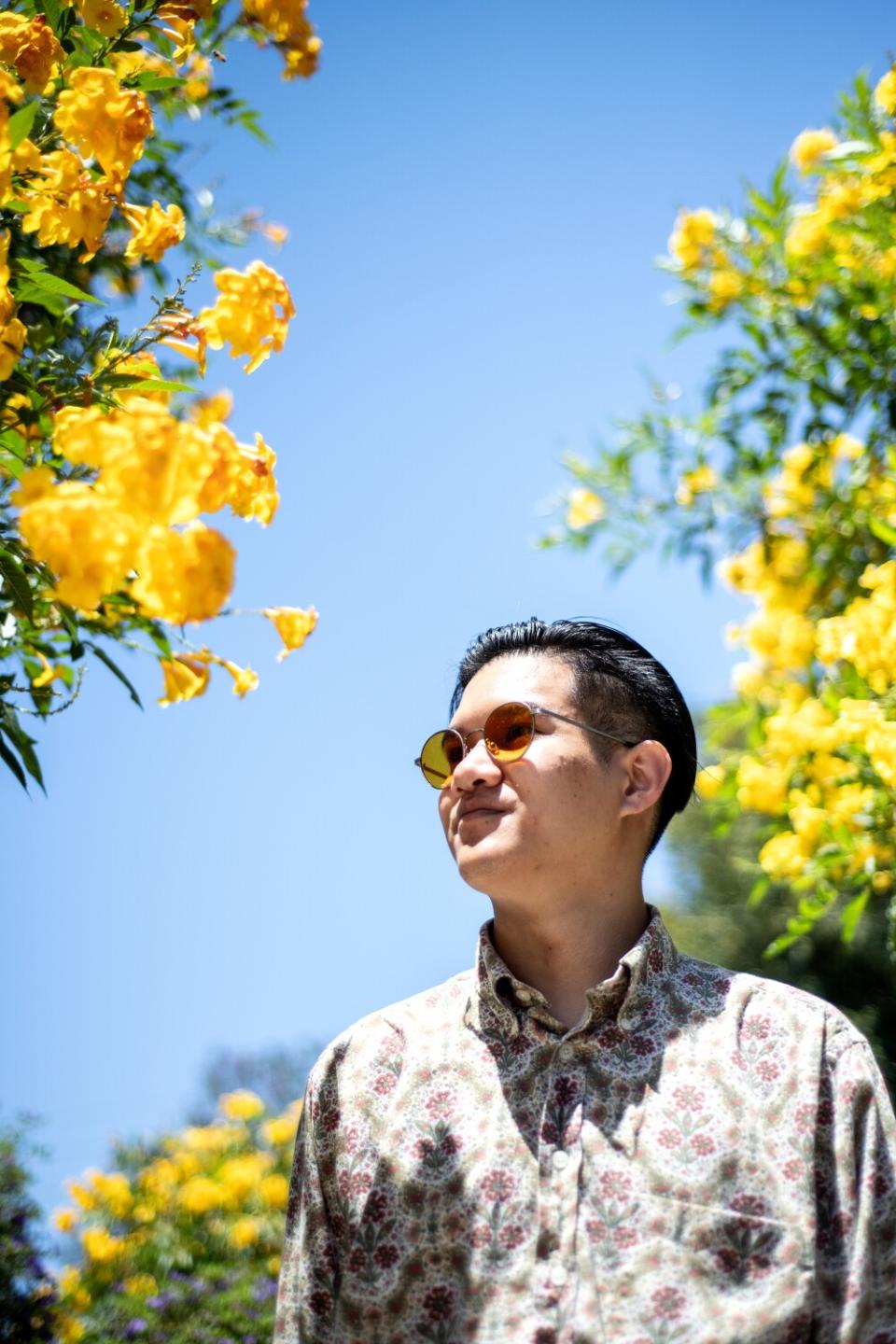
"There isn't a ton of specialty Thai food and I wanted to create something new that's not really here in the states," Wai said.
In May 2021, in between engineering jobs, he ordered a $30 ice cream machine from Amazon and started making gelato. His core flavors include Thai tea, espresso, vegan fior di cocco (a play on fior di latte), riceberry horchata and mango. Moom Maam is one of the few temple vendors you'll soon be able to find outside of the market. Wai recently started selling his desserts off of a food truck you can track via Instagram.
Wherever you find Wai, you can order his version of a sundae, simply called "the special." Wai starts by making a fresh waffle using a gluten-free batter he developed when he started selling fried bananas at the market back in November. (He actually won the fried banana competition and then gradually started selling gelato as well.)
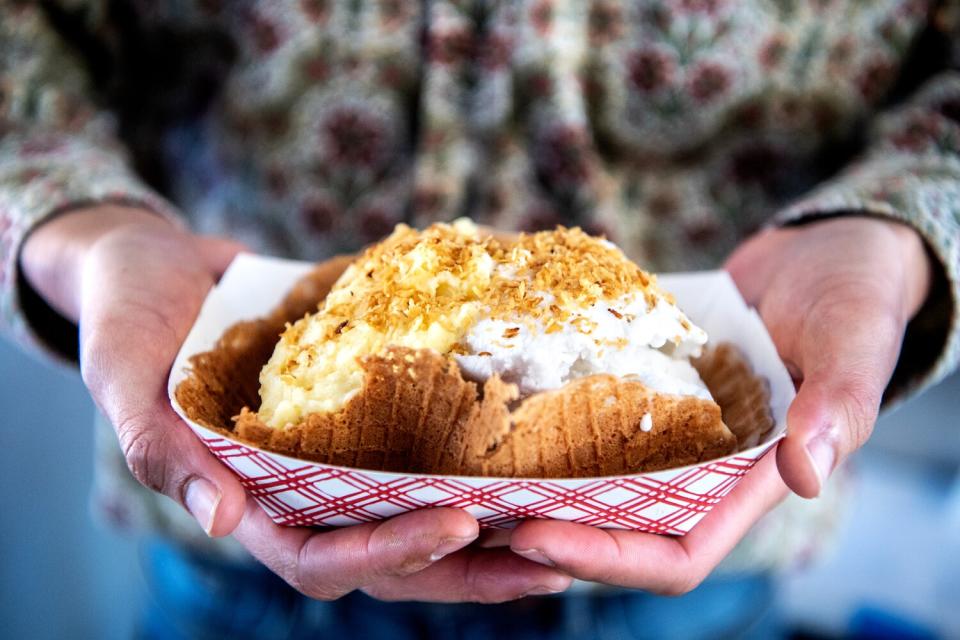
Once the waffle is cooked, he carefully folds in the edges, creating a wavy bowl. He adds sweet coconut sticky rice, then two scoops of gelato. The special is finished with a sprinkle of toasted grated coconut and caramelized palm sugar. For a semifrozen version of mango sticky rice, order your special with the fior di cocco and the mango. The flavors are instantly recognizable, only semifrozen. It's the best way to soothe your tongue after the welcome onslaught of chiles and garlic.
This story originally appeared in Los Angeles Times.

